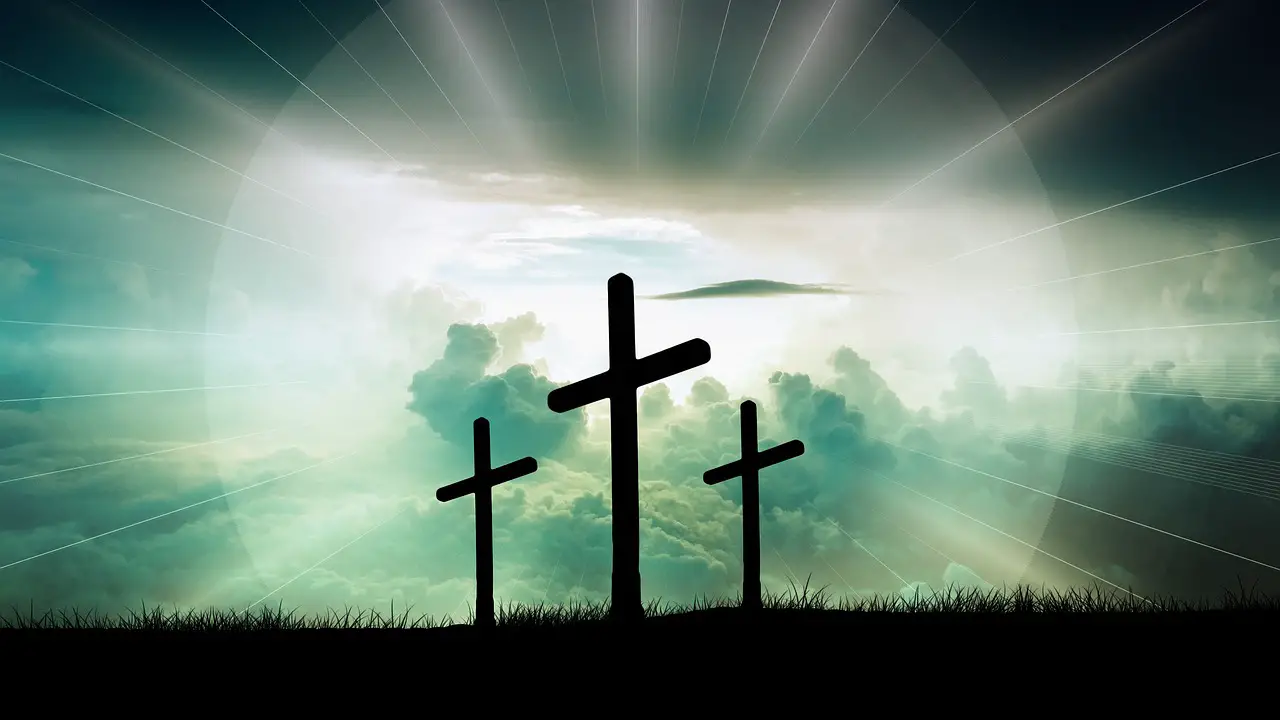The symbolism of trees in the Hebrew language reflects deep spiritual and cultural meanings. Trees are often seen as representations of life, growth, and connection to God. They embody strength, stability, and the importance of community and nature.
The Hebrew language is rich in symbolism and metaphor. One of the most significant symbols found in this language is the tree. Trees hold a prominent place in Hebrew texts, from the sacred scriptures to folklore. They are often used to convey complex ideas about life, spirituality, and the relationship between humanity and the divine.

In Hebrew, the word for tree is “etz” (עץ). This simple term carries a wealth of meaning beyond its literal definition. The concept of trees is interwoven throughout Jewish teachings and traditions. For instance, trees are frequently mentioned in the Torah, symbolizing various aspects of existence and God’s creations.
The Spiritual Significance of Trees
Trees symbolize life and continuity in Hebrew culture. They are seen as living entities that grow, change, and endure through time. This endurance is often likened to the resilience of the Jewish people throughout history. The deep roots of trees represent stability and connection to heritage, while their branches reach toward the heavens, symbolizing aspirations and spiritual growth.
Moreover, the concept of the “Tree of Life” appears prominently in Hebrew scripture. It is often associated with wisdom and divine knowledge. This notion is not only a metaphor for spiritual enlightenment but also reflects the interconnectedness of all living beings.

Symbolic Representations
Various types of trees are used symbolically in Hebrew literature. Each type of tree offers different connotations and meanings:
- Olive Tree: Represents peace, prosperity, and divine favor.
- Fig Tree: Symbolizes fruitfulness and abundance.
- Palm Tree: Often associated with righteousness and victory.
- Cedar Tree: Represents strength and resilience.
These symbolic representations highlight the diverse meanings attributed to trees within Hebrew culture. Each tree serves as a reminder of values that are vital to Jewish identity and spiritual life.
Trees in Biblical Texts
The Bible contains numerous references to trees, illustrating their importance in both everyday life and spiritual contexts. For example, in the Book of Genesis, the Tree of Knowledge signifies the duality of good and evil, while in Proverbs, wisdom is described as a tree of life to those who embrace it.

The significance of trees extends beyond mere symbolism; they also play practical roles in agricultural practices and daily living. In ancient times, trees provided shelter, food, and materials for building. This practical aspect enhances their symbolic meaning, reinforcing the idea that nature is a gift from God to be respected and cherished.
Cultural Traditions Involving Trees
In addition to their scriptural significance, trees are central to various cultural traditions within Judaism. One well-known tradition is the Tu B’Shevat holiday, also known as the New Year for Trees. This holiday celebrates nature and emphasizes environmental awareness. It encourages planting trees and promotes appreciation for the earth’s resources.
The celebration includes rituals that involve eating fruits from trees, particularly those native to Israel. This practice connects individuals with their heritage and the land, reinforcing the importance of trees in both cultural identity and spiritual life.

Conclusion
The symbolism of trees in Hebrew language and culture reveals a profound understanding of life, spirituality, and community. Through their representations, trees serve as a reminder of resilience, growth, and the connection between humanity and nature. As such, they hold a cherished place in Jewish tradition and continue to inspire generations.
Tree Symbolism in Hebrew Literature
Hebrew literature, particularly the Bible and later texts, frequently employs tree symbolism to convey complex themes and moral lessons. Trees often serve as metaphors for human experiences, divine interaction, and the natural world. Their presence in various narratives enriches the stories and provides deeper insights into the human condition.
Metaphorical Uses of Trees
Trees are not only physical entities but also symbolize significant concepts in Hebrew literature. Some key metaphorical uses include:
- Life and Growth: Trees represent the cycle of life, illustrating themes of birth, growth, decay, and renewal.
- Wisdom: The Tree of Knowledge serves as a powerful symbol of awareness, understanding, and the moral complexities of life.
- Stability: Just as trees stand tall and firm, they symbolize steadfastness in faith and character.
- Connection: Trees illustrate the interconnectedness of all living things, reinforcing the notion that humanity is part of a larger ecosystem.
The use of trees as symbols allows authors to explore deep philosophical questions about existence, morality, and spirituality. These themes resonate with readers and invite reflection on their own lives and beliefs.
Prominent Trees in the Bible
Several trees are highlighted throughout biblical narratives, each carrying unique meanings and implications:
- The Tree of Life: Mentioned in Genesis, this tree symbolizes eternal life and divine wisdom.
- The Tree of Knowledge: Also in Genesis, it represents the duality of good and evil and the consequences of choice.
- The Mustard Tree: Used in parables by Jesus, it symbolizes faith and the growth of God’s kingdom.
- The Vine: Represents Israel’s relationship with God, emphasizing nurturing and care.
Each of these trees serves to deepen the reader’s understanding of theological principles and human experiences. They are not merely background elements; they are integral to the narratives’ messages and teachings.
Cultural Practices Related to Trees
Trees play a vital role in various cultural practices within Judaism. These traditions emphasize respect for nature and highlight the significance of trees in daily life. Understanding these practices offers insight into how trees are revered in Hebrew culture.
Rituals and Celebrations
Many Jewish rituals involve trees in various forms. Some notable practices include:
- Tu B’Shevat: As previously mentioned, this holiday celebrates trees and nature. It includes planting trees and eating fruits from the land of Israel.
- Sukkot: This harvest festival involves building temporary shelters using branches and leaves, symbolizing the connection to nature and gratitude for its bounty.
- Shmittah Year: Every seventh year, agricultural land is left fallow. This practice allows the earth to rest and rejuvenate, reflecting a deep respect for nature’s cycles.
These rituals emphasize the importance of trees not only as symbols but also as active participants in religious life. They foster a sense of community and shared values among participants.
Environmental Stewardship
The connection between trees and environmental stewardship is particularly emphasized in contemporary Jewish thought. Many Jewish leaders advocate for sustainable practices that honor the land. This commitment stems from ancient teachings that recognize humanity’s responsibility to care for creation.
This stewardship manifests in various ways, including:
- Community Tree Planting Events: Encouraging communities to come together to plant trees enhances local environments while building camaraderie.
- Education Programs: Schools and community organizations often incorporate lessons about ecology and conservation based on Jewish teachings.
- Advocacy for Environmental Policies: Many Jewish organizations actively participate in promoting policies that protect natural resources and promote sustainability.
This emphasis on care for the environment highlights a broader understanding of tree symbolism as it relates to ethical living. It connects ancient teachings with modern-day issues, showcasing the relevance of tree symbolism in contemporary society.
The Role of Trees in Jewish Mysticism
Trees also hold a significant place in Jewish mysticism, particularly within Kabbalah. In this tradition, the Tree of Life is a central symbol representing the structure of creation and the path to spiritual enlightenment.
Kabbalistic Interpretation
The Kabbalistic Tree of Life consists of ten sefirot (emanations) that represent different aspects of God’s nature. Each sefirah corresponds to various qualities that guide spiritual development:
- Keter (Crown): Represents divine will and purpose.
- Chokhmah (Wisdom): Symbolizes intuitive insight.
- Binah (Understanding): Represents analytical thought and discernment.
- Tiferet (Beauty): Represents harmony and balance.
This mystical interpretation underscores the profound spiritual significance trees have within Hebrew culture. They serve as metaphors for personal growth and divine connection, offering pathways to deeper understanding and enlightenment.
Tree Symbolism in Jewish Philosophy
Jewish philosophy often explores the intersection between nature and spirituality. Trees, as significant symbols, embody philosophical concepts that address the nature of existence, ethics, and human responsibility. Understanding these philosophical perspectives can deepen appreciation for tree symbolism in Hebrew culture.
Existential Reflections
Trees serve as metaphors for existential questions within Jewish philosophy. Their life cycles reflect human experiences, including growth, decay, and renewal. Philosophers often draw parallels between the life of a tree and the journey of a person:
- Growth: Just as trees grow from seeds into mighty beings, individuals undergo personal development throughout their lives.
- Struggles: Trees face harsh weather, pests, and disease, mirroring the challenges individuals encounter.
- Connection to Roots: Trees are grounded in their roots, symbolizing the importance of heritage and tradition.
This philosophical interpretation encourages individuals to reflect on their own life journeys and the lessons they can learn from nature.
Ethical Responsibilities
The relationship between humans and trees also raises ethical considerations within Jewish thought. The Torah emphasizes stewardship of the earth, highlighting the duty to care for creation:
- Bal Tashchit: This principle prohibits unnecessary destruction of resources, underscoring the value of preserving trees and nature.
- Community Welfare: Trees provide fruit and shade, which contribute to community health. This highlights the interconnectedness of social responsibility and environmental care.
- Environmental Justice: Caring for trees is seen as part of a broader commitment to justice and equality, ensuring that all communities have access to green spaces and natural resources.
These ethical frameworks encourage a sense of responsibility toward the environment, urging individuals to act in ways that benefit both humanity and nature.
The Role of Trees in Jewish Art and Symbolism
Trees have inspired various forms of art within Jewish culture, serving as powerful symbols in visual representations. They appear in paintings, sculptures, and decorative motifs. The artistic portrayal of trees reflects their significance in spiritual and cultural contexts.
Artistic Representations
In Jewish art, trees are often depicted in ways that enhance their symbolic meanings. Some common themes include:
- The Tree of Life: Frequently illustrated as a mystical tree with branches extending upward, symbolizing divine connection and spiritual growth.
- Fruitful Trees: Paintings of olive and fig trees symbolize peace and abundance, reflecting prosperity in both life and faith.
- Shelters and Refuge: Artistic representations often include trees providing shade or shelter, symbolizing protection and comfort.
These artistic expressions capture the beauty of trees while conveying deeper spiritual messages. They invite viewers to engage with the underlying themes of strength, resilience, and community.
Symbolism in Decorative Arts
Trees also play a significant role in decorative arts, particularly in traditional Jewish ceremonies. They are often incorporated into ceremonial objects such as:
- Mezuzah: The case that holds a scroll containing verses from the Torah is sometimes adorned with tree motifs, symbolizing protection and blessing for the home.
- Kiddush Cup: Cups used during blessings over wine may feature designs of trees or vines, representing abundance and joy.
- Chuppah: The wedding canopy may be decorated with branches or floral arrangements, symbolizing new beginnings and growth in marriage.
These decorative elements celebrate the significance of trees in important life events, reinforcing their role as symbols of blessings and continuity.
The Influence of Trees on Hebrew Language
The Hebrew language itself is richly infused with tree symbolism. Words related to trees often carry deeper meanings that extend beyond their literal definitions. This linguistic connection highlights the importance of trees within the cultural consciousness.
Linguistic Connections
The Hebrew word for tree, “etz” (עץ), connects to various other words and concepts that further enhance its significance:
- Etz Chaim (Tree of Life): This term appears in sacred texts and symbolizes wisdom and spiritual nourishment.
- Etz Hadar (Beautiful Tree): Refers to specific species like the citron tree, which holds special meaning during Sukkot.
- B’reishit (In the Beginning): The opening word of Genesis describes creation, where trees were among the first living things established by God.
This interplay between language and symbolism illustrates how deeply embedded tree imagery is in Hebrew culture. Trees are not merely physical entities; they are integral to the very fabric of language, spirituality, and identity within Judaism.
The Role of Trees in Contemporary Jewish Life
In modern Judaism, the symbolism of trees continues to resonate powerfully. Trees are not only celebrated for their historical and scriptural significance but also embraced as vital components of contemporary life, spirituality, and community engagement. This connection to trees reflects a commitment to environmental sustainability and ethical living.
Environmental Awareness and Sustainability
As society becomes increasingly aware of environmental issues, Jewish communities are actively participating in efforts to promote sustainability. Many congregations and organizations emphasize the importance of caring for the earth, driven by the values rooted in ancient texts.
- Tree Planting Initiatives: Many Jewish organizations sponsor tree planting events, underscoring the importance of reforestation and ecological restoration.
- Eco-Kosher Practices: Some communities are adopting eco-kosher principles, which consider environmental impact alongside traditional dietary laws.
- Advocacy for Climate Action: Jewish groups are increasingly involved in advocacy for policies that address climate change, drawing on teachings that emphasize stewardship of the earth.
This proactive approach reflects a deep understanding of the interconnectedness of life and the responsibility to protect and nurture the environment, mirroring the age-old reverence for trees found in Hebrew texts.
Community Building Through Tree Symbolism
Trees also play a significant role in fostering community connections. They serve as symbols of unity, strength, and growth within communal life. Various events and practices highlight this aspect:
- Community Gardens: Many communities establish gardens that incorporate trees, providing spaces for gathering, learning, and nurturing relationships.
- Educational Programs: Schools and synagogues often host programs focused on the significance of trees in Judaism, teaching younger generations about their cultural heritage.
- Celebrations of Nature: Events like Tu B’Shevat not only celebrate trees but also bring communities together to reflect on shared values and environmental responsibilities.
These activities reinforce the idea that trees are not just individual entities but vital elements of a larger community ecosystem, fostering relationships among members while emphasizing the importance of unity and collaboration.
Final Thoughts
The meaning of tree symbolism in the Hebrew language reveals profound insights into life, spirituality, and community. From their representation of growth and resilience to their role in ethical responsibilities and environmental stewardship, trees encapsulate essential truths that resonate through time.
The interplay between trees and Hebrew culture serves as a reminder of humanity’s connection to nature and the divine. As symbols of life, wisdom, and continuity, trees encourage reflection on personal journeys and collective responsibilities. They remind us that we are part of a larger tapestry that includes past generations and future ones yet to come.
As we continue to engage with these symbols in contemporary practices, it is clear that trees will remain an enduring part of Jewish identity. Their significance transcends mere physical presence; they embody values that inspire positive action and thoughtful living. In a world facing environmental challenges, the lessons derived from tree symbolism are more relevant than ever, urging us to cultivate resilience, compassion, and respect for all creation.
In conclusion, understanding tree symbolism in Hebrew culture enriches our appreciation for both the spiritual and practical aspects of life. Trees serve as vital links between history, identity, and community, reminding us that our actions today shape the world for generations to come.
